What’s the Best Way to Catch Trophy Catfish This Winter?
From our vantage point on a brisk, sun-kissed dock, we can’t help but notice how winter trophy catfish are top of mind for so many anglers right now. As temperatures dip, the challenges of cold-weather catfishing grow more intriguing. Folks have been wondering if there’s a trick to locating and landing that true trophy—one that might just yank the rod clear out of a holder if you’re not prepared. We think there is, and it’s the focus of Steve Douglas’s latest adventure. Before we go on, let’s take a quick look at his newest video, where he explains why winter trophy catfish aren’t as elusive as folks believe.
Watching this clip, it’s evident that Steve favors anchoring and “bounding down” techniques, explaining precisely how to nail the right depth transitions and create a strong scent trail. The entire premise behind bounding down is about patience, precision, and reading the water, especially during those chilly months. Observing the calm yet determined tone he uses in the video, we see how experience plays a crucial role in consistent winter trophy catfish success.
Moreover, the video highlights the potential synergy between using frozen skipjack as bait and focusing on prime ledges in the river. It’s an appealing concept, particularly for newcomers who’d prefer to spend more time fishing and less time chasing live bait. Let’s dive deeper into the essential takeaways and see how we can transfer his insights to our own winter catfishing excursions.
Embracing the Anchoring Technique
From our perspective, one of the most underrated tactics for winter trophy catfish is simple anchoring. Many fishermen might believe drifting is the only way to find active fish, but winter conditions can make anchored sets a goldmine—especially along those ledges and deep holes. Steve makes it clear that patience and a well-placed anchor can lead to big rewards when the water temperature drops.
Finding the Perfect Spot to Anchor
To locate the ideal winter trophy catfish hangout, it pays to identify deep channels that drop quickly. A typical approach is to look for a shelf around 30–40 feet that transitions into something deeper—say 60 or 70 feet. Winter catfish often stack in these areas, waiting for meals to drift by in the current. By anchoring on the upper edge of these drops, anglers keep baits in the strike zone for longer periods, maximizing those big-fish takedowns.
Setting Up the Scent Trail
One of the most striking moments in the video is when Steve explains how a strong scent trail can become your secret weapon. Baiting up with fresh or frozen skipjack (and acknowledging that frozen works fine in winter) simplifies the process. Once the boat is anchored, the scent disperses downcurrent, tempting catfish to investigate. This is especially potent if the fish are grouped along the ledge or resting in deeper holes. Within minutes, they’ll follow the scent right to your hooks—if you’re patient enough to let them.
Understanding “Bounding Down”
While anchoring in one area can certainly yield results, Steve underscores a dynamic twist: bounding down. This technique is surprisingly straightforward yet remarkably effective.
Bounding Down Defined:
• Start by anchoring in a promising deep hole for around 30 minutes.
• If the big bites aren’t materializing, drift 50–60 yards downriver while keeping the scent trail in the current seam.
• Re-anchor, drop fresh baits, and wait again.
Why Bounding Down Works So Well
As the video reveals, bounding down capitalizes on the same scent trail you established upstream. Each move downstream keeps your baits in that established corridor of attraction. The result? You only target the fish that are actively feeding or highly curious instead of waiting out an unproductive hole. This can turn hours of fruitless waiting into a series of short, efficient stops that zero in on genuine lunkers.
Key Details and Timing
We noticed that Steve tends to give each spot around 30 minutes before moving. In winter, catfish can be a bit sluggish, but if there’s any current, they usually won’t waste too much time investigating. If there’s no real takedown in that timeframe, he repositions the boat. This underscores that in cold-weather catfishing, you may need to “run and gun” a bit more, while still embracing a patient approach during each anchor set.
Bait Selection Insights
Bait choice can make or break your winter trophy catfish success. According to Steve’s perspective, it’s less about having exclusively fresh skipjack and more about using what you have efficiently. Frozen skipjack can be just as enticing during cold months, especially if you chunk it properly to release plenty of scent.
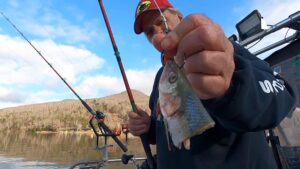
In the video, we see him hooking large skipjack heads, a proven tactic for drawing in big blues. He also warns about smaller catfish pecking at the bait, but encourages anglers to wait for that true “rod-bender” strike. Patience, once again, proves to be the operative word—rushing to set the hook too soon might leave you with empty lines and missed opportunities.
We couldn’t help but notice Steve’s praise for quality ROD HOLDERS throughout his demonstration. Indeed, using a secure rod holder can be a lifesaver when that once-in-a-lifetime fish decides to peel drag. Monster Rod Holders, for instance, have become a reliable piece of equipment that helps keep rods stable under heavy pressure.
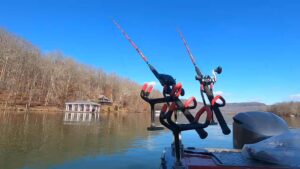
For those eyeing trophy-class catfish, it’s worth investing in gear that can handle brute strength. The rods in the video are laid out strategically and spaced so each can cover varying depths along the drop. And if you’re in the market for a dependable landing net to secure your winter trophy catfish, check out our Heavy-Duty Landing nets designed with sturdy handles and wide hoops for big cats. Anyone who’s followed Steve’s channel knows it’s not just about the technical details. In the video, we see glimpses of real excitement, especially when a fish “thumb-burns” the spool. Hearing that drag scream is the adrenaline shot catfish anglers dream of.
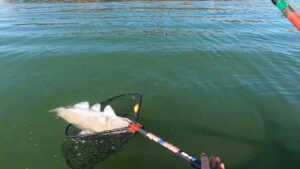
From our viewpoint, this sense of humor and excitement keeps catfishing fun. Little moments—such as waiting out the smaller fish or chatting about how fast a five-pounder can nibble—remind us why we brave cold winter mornings. It’s also a subtle lesson for new anglers: if you aren’t ready for a potential monster, you might miss the thrill of a lifetime.
Action on the Tennessee River
There’s no doubt the Tennessee River sets a brilliant stage for winter trophy catfish. Those deep holes formed by decades of current and geology make it prime territory. If you’ve ever wondered whether large blues roam these waters, the footage in the video proves it beyond a shadow of a doubt. Again and again, Steve uncovers spots teeming with life, highlighting that consistent current can situate fish predictably—even if they’re not always monstrous.
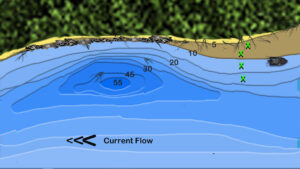
Why the Tennessee River is a Winter Catfishing Haven
Anglers often cherish the Tennessee River for its extensive network of channels, bends, and drop-offs—perfect for harboring sizeable blues. During winter, colder water temperatures consolidate catfish in deeper areas where the current oxygenates and funnels baitfish. That means a properly placed anchor or bounding approach along a ledge can pay off in spades. Plus, local fish populations benefit from sustainable management efforts, ensuring the region remains a trophy catfish hotspot year after year.
When it’s all said and done, here’s the core knowledge to keep in your back pocket:
• Pinpoint Prime Depth: Target steep drops transitioning from around 30–40 feet to deeper holes of 60–70 feet.
• Anchor Smart: Give each spot about 30 minutes. If the big bites don’t show, bound down 50–60 yards while keeping your scent in the current seam.
• Bait with Confidence: Frozen skipjack heads produce ample scent during winter, often rivaling fresh bait.
• Rod Holders Matter: A strong rod holder helps secure your gear when you least expect a rod-thumping strike.
• Watch the Nibbles: Light pecks usually signal smaller fish. Wait for that firm takedown to ensure a big cat is on the line.
The Real Payoff
There’s a certain magic in hooking a winter trophy catfish—watching the rod tip bow, feeling the pulse of a giant fish, and battling the cold just enough to savor a success few appreciate. By closely observing Steve Douglas’s approach, from anchoring in high-potential zones to methodically bounding downriver, we glimpse a well-tested formula for reeling in these big blues. We encourage you to watch the full video, gear up with confidence, and test these strategies on your home waters. You might just land a personal best that makes you tremble with excitement.
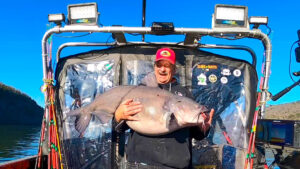
As always, if you need to stock up on landing nets, rod holders, or other gear essentials, our Monster Rod Holders store is open around the clock. And if you’re looking to level up your cold-water technique even further, keep an eye out for our upcoming articles, where we’ll take a closer look at advanced drifting tactics and new gear innovations.
“If you’re in that tap-tap-tap stuff, then you’re not in the right fish.”
— Steve Douglas at 23:28
Master winter trophy catfish strategies with expert anchoring and bounding tips. Discover how to find, entice, and land giant blues in cold waters.
FAQ
1. How long should I anchor on a spot when winter catfishing?
It’s wise to give each location at least 30 minutes. If you don’t see a decent takedown by then, move downstream 50–60 yards (bounding down) to keep your scent trail flowing in the current.
2. Can I use frozen skipjack in cold weather?
Absolutely. Frozen skipjack often works as well as fresh bait in winter, thanks to its potent scent. It’s also more convenient if you don’t have time to catch live bait.
3. What rod holder is best for trophy catfish?
A sturdy rod holder, like those we offer at Monster Rod Holders, ensures your setup stays secure when a big catfish strikes hard. Strong metal construction and a reliable locking mechanism are key.
4. Why is anchoring so effective for trophy blues in winter?
Winter catfish group in predictable ledges and holes. Anchoring ensures your bait remains in the prime strike zone, letting the scent spread and attract big fish.
5. What’s the advantage of ‘bounding down’?
Bounding down helps you cover more ground without losing the scent trail you’ve created. By moving short distances downstream, you target actively feeding catfish in the same current seam.
Something about where you were:
The Tennessee River Advantage
The Tennessee River’s system of dams and winding channels creates ideal conditions for winter trophy catfish. Its steady current stirs up baitfish and oxygenates the water, encouraging larger blues to stay on the prowl. Historically known for record-breaking catfish, this river often yields high catch rates, even in winter. The combination of sheltered coves, distinct ledges, and circulating currents makes the Tennessee River a prime locale to put these anchoring and bounding strategies into action—especially if you’re aiming for personal bests.
Key Takeaways
• Location: Focus on deep water adjacent to shallower banks, typically 30–40 feet dropping to 60–70 feet.
• Technique: Use a dynamic anchoring method—anchoring first, then moving 50–60 yards downstream to keep the scent in the current.
• Gear: Trust a strong rod holder and a capable landing net to handle the weight of a trophy fish.
• Timing: Winter catfish respond swiftly if they’re active. Spend 30 minutes in each spot. If no strong bite occurs, bound down.
• Bait Prep: Cutting large chunks of skipjack to release maximum scent is key to drawing in big blues.

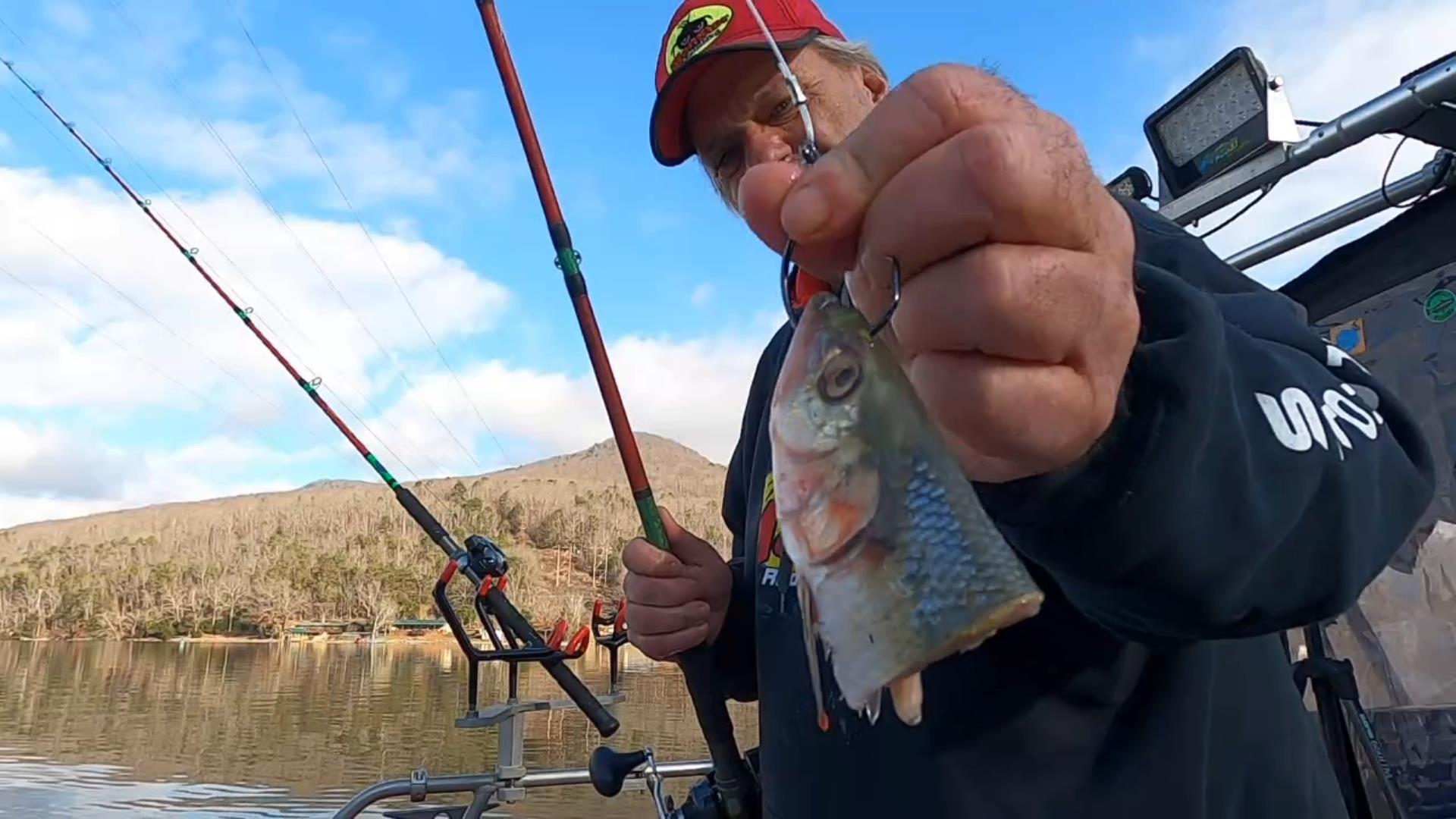
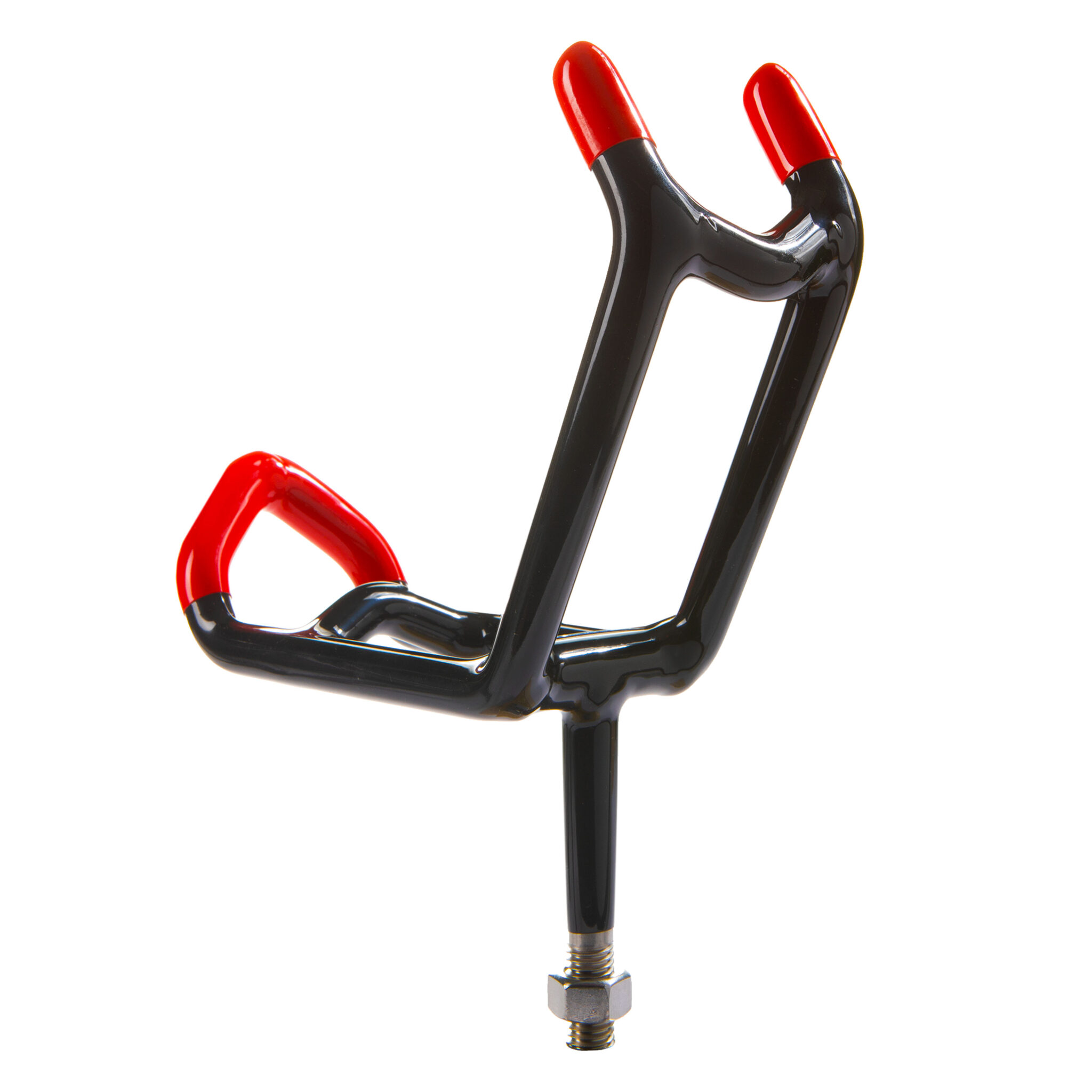
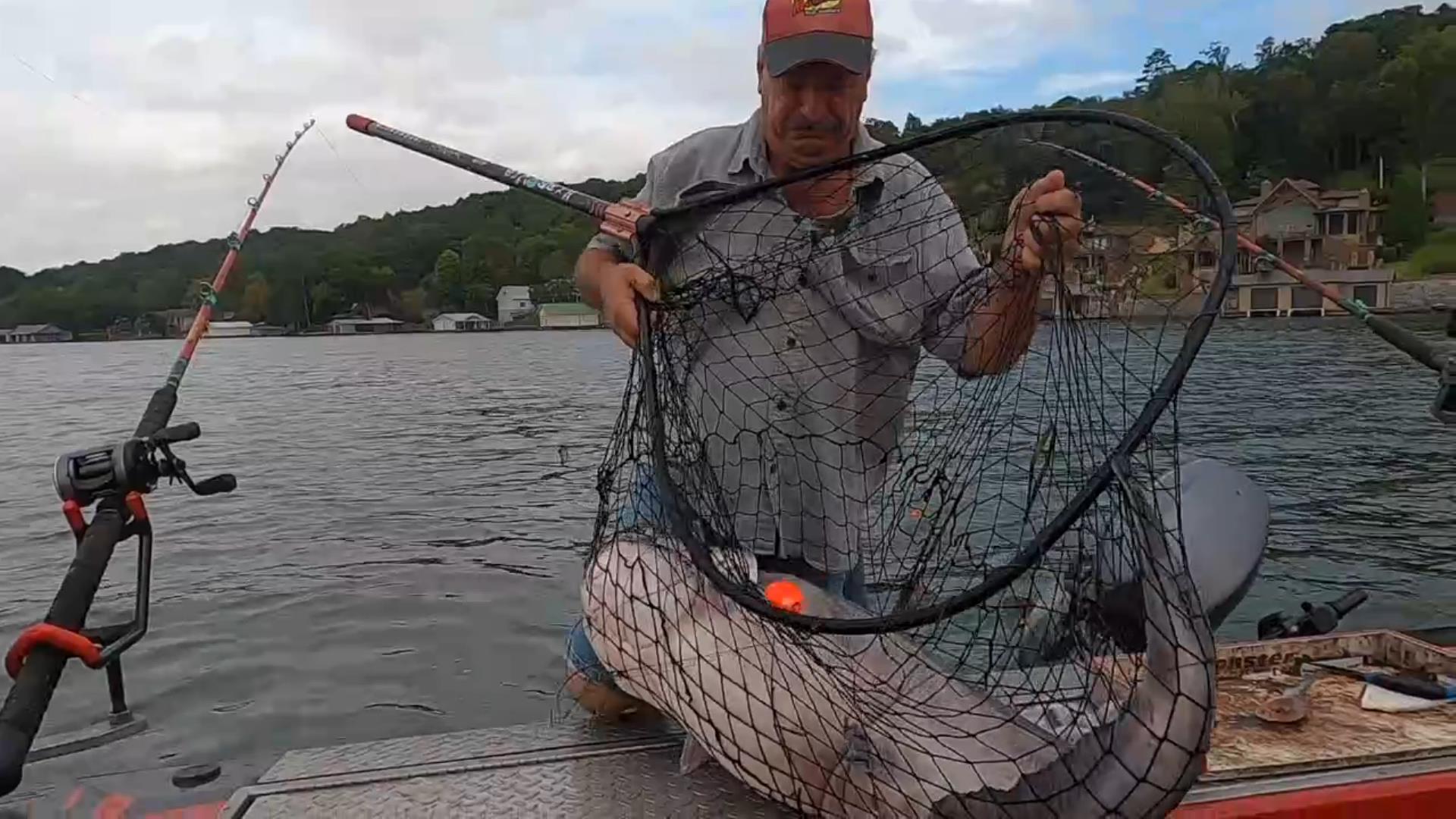


0 Comment